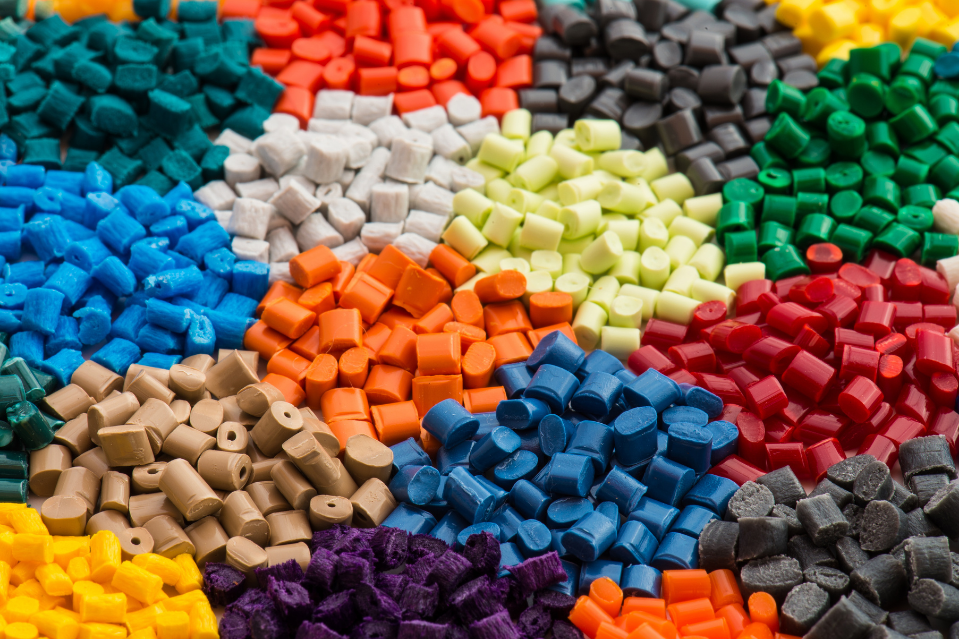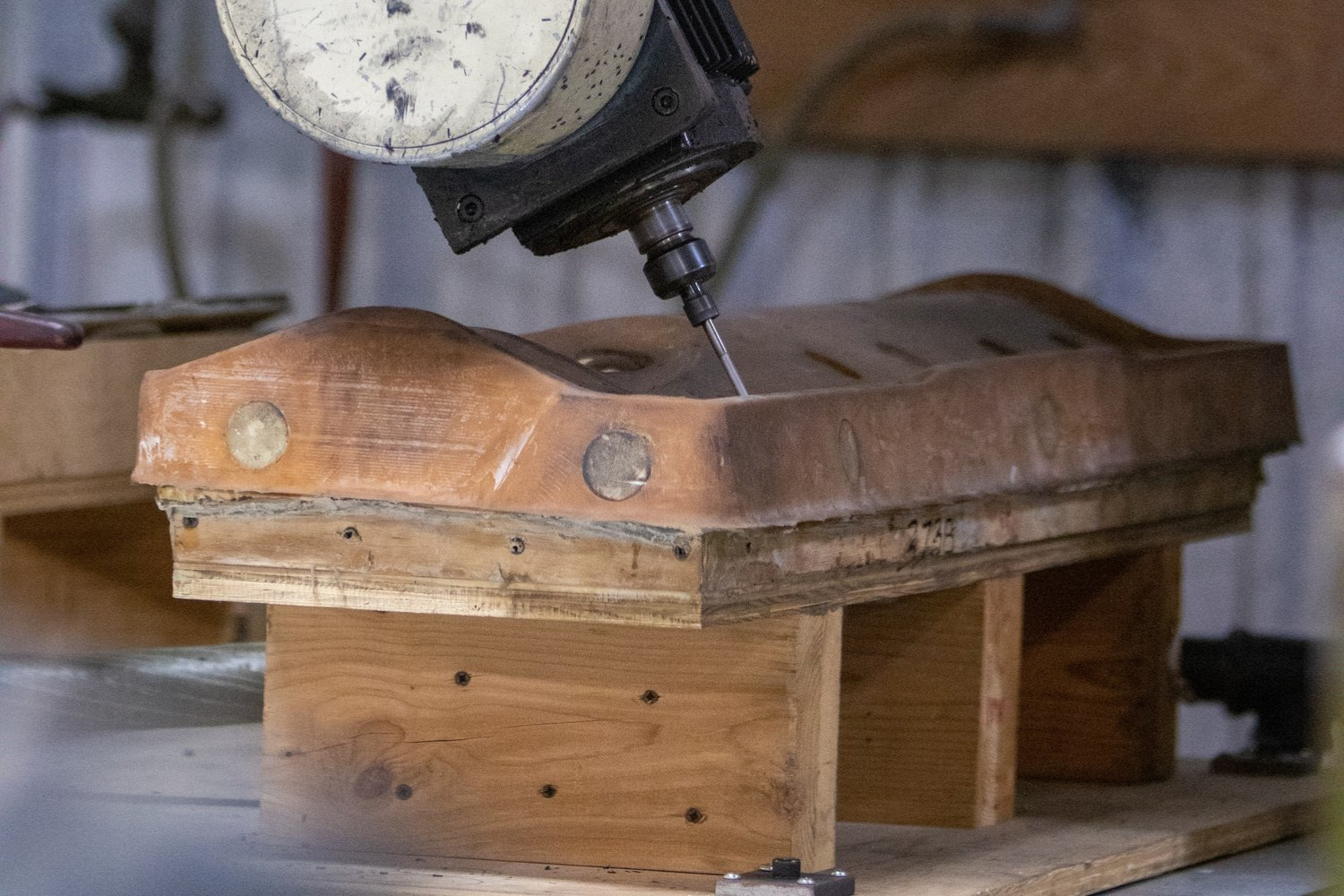The Science of Thermoforming — Basic Terminology Explained
At its most basic level, thermoforming is about the heating and cooling of thermoplastic materials. While it’s not rocket science, it is a manufacturing discipline founded on science, namely the science of thermodynamics. As the name implies, thermodynamics is about physical relations between heat and other forms of energy.
While we will not get into the theory of thermodynamics here, a familiarity with some of the technical terminology, as it applies to forming plastic, can enhance our understanding of thermoforming and be useful when deciding how to design and manufacture thermoformed parts.
Like plastic materials themselves (PP, ABS, etc.), many technical terms are often referred to by letters only. The post reviews a handful of terms critical to the molecular structure of thermoplastic materials and the way behave when heated and cooled.
Tg (glass transition temperature)
Tg is the temperature above which amorphous (non-crystalline or semi-crystalline) polymers become viscous and rubbery. The transition from a solid, glass-like state to a flexible, rubbery one is an important aspect of polymer behavior; is indicative of changes in physical properties such as hardness and elasticity.
Some polymers are used (after forming) below their Tg (for example acrylic, PS, ABS, and PVC) when they are glassy and rigid; while other polymers are used above their Tg (for example rubber elastomers) when they are soft and flexible. In the latter case, the Tgs are less than room temperature. The Tg of rigid polymers like PS and acrylic is around 210°F, while the Tg for PVC is roughly 185°F.
Amorphous Polymers
Thermoplastic polymers consist of long chains of molecules and are classified as amorphous or crystalline. Amorphous polymers have a random molecular structure and do not exhibit a sharp, distinct melting point. Instead, as the temperature rises above the Tg these polymers become gradually softer and softer until they melt. Tgs of amorphous polymers can be adjusted using chemical additives and fillers.
Tm (melting temperature)
Unlike amorphous polymers, crystalline and semi-crystalline polymers exhibit a distinct melt temperature, Tm; and can, in the case of semi-crystalline polymers, also have a Tg. As a rule, crystalline and semi-crystalline polymers such as HDPE, PET, and nylon 6 require greater amounts of heat to melt than amorphous polymers.
This in turn impacts processing costs. For example, Tm for HDPE is around 275°F, and Tm of nylon is approximately 430°F. Semi-crystalline PET has a Tg of approximately 176°F and a Tm around 300°F.
Crystalline and Semi-crystalline Polymers
The polymer chains comprising these plastic materials have a highly ordered molecular structure. The bulk polymer material does not gradually soften as the temperature increases but instead turns from solid to liquid at a defined melting temperature.
As more heat energy is applied to the material, the polymer chains gain enough energy to begin moving and sliding with respect to one another at an increasing rate. Melt is achieved when all polymer molecules are in motion. After melting, the polymer crystallizes again once it is cooled below the Tm. As with amorphous polymers, melting and other physical properties can be modified by the addition of chemical additives and plasticizers.
Determining Tg and Tm: DSC (differential scanning calorimetry) and DTA (differential thermal analysis)
Determining the Tg and Tm of thermoplastic polymers is straightforward and not very expensive thanks to the laboratory instrumentation referred to as DSC and DTA. The most common method to determine Tg and, by default, Tm, of plastic is ASTM E1356.
The method is applicable to both DSC and DTA, and encompasses both amorphous and partially crystalline polymers. The output of both methods is a graph that charts peaks related to endothermic and exothermic transitions (reactions) with thermal input. These “phase changes” correspond to Tg and Tm. The difference between DTA and DSC is as follows:
- In DTA, the difference in temperature between the sample and reference material is monitored against time or temperature while the temperature rise/fall of the sample is programmed.
- In DSC, the difference in the heat flow to a sample and to reference material is monitored against time or temperature while the temperature rise/fall of the sample is programmed.
Thermodynamics fun fact:
Okay, maybe not ‘fun’ but interesting.
Of the three fundamental laws of thermodynamics, the second is the most peculiar, most misunderstood, and the most discussed (among nerds).
The second law of thermodynamics states that the entropy (a rough measure of a system’s disorder or randomness) of any isolated system always increases. The second law has particular relevance to thermoformers, as one could characterize the entire process of forming plastic as the effort of trying to minimize randomness and thereby decrease entropy.
When students are taught the second law, there is usually is at least one smart aleck in class who raises his hand with an objection. “What about living things which spontaneously make complex order out of random chaos and thereby decrease entropy?
Doesn’t life violate the second law?” The answer is usually accompanied by a smirk on the teacher’s face: No birds, plants, and humans do not violate the second law because they are not isolated systems, but open ones requiring the input of large amounts of energy to turn all that disorder into metabolic order.



